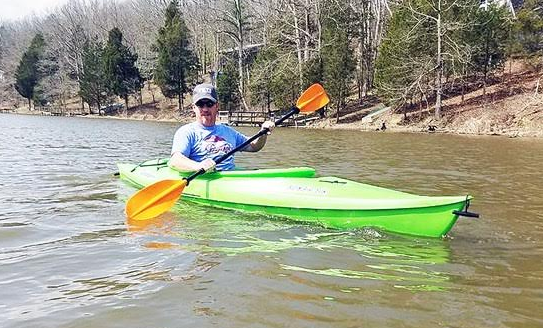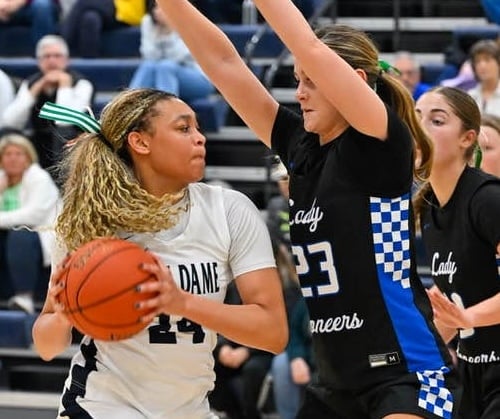With the source of gizzard shad finally shut off, biologists will at long last be able to restore one of Central Kentucky’s premier panfish lakes.
In the late 1970s, when I first began writing about fishing in Kentucky, tiny Elmer Davis Lake had a big reputation for producing thick, hand-sized bluegill. Back then the lure of choice for many anglers was a 1/32 or 1/16-ounce popeye jig tipped with a wax worm, rigged on a 18 to 24-inch leader of monofilament line behind a clear float, and cast on ultralight spinning tackle.
The comeback of the lake’s quality panfish begins next Monday, Dec. 12, when it will close to fishing and boating for about two weeks (through Dec. 30), while a crew of fishery biologists and technicians eradicate the gizzard shad in the 149-acre impoundment near Owenton, Ky.

“Historically, Elmer Davis has been a great panfish lake,” said Central District Fishery Biologist Jeff Crosby, of the Kentucky Department of Fish and Wildlife Resources (KDFWR). “We’re excited about getting the lake back to where it used to be, producing big bluegill and redear sunfish.”
The lake also supports a small population of a third sunfish species, warmouth.
Two previous shad eradication efforts at Elmer Davis in the 1990s proved unsuccessful in the long run, but what’s different this time is that the source of the shad has been shut off.
“Lower Thomas Lake has always been the source of the shad,” said Crosby. “That’s because the water pumped up into the lake from the Kentucky River contained shad fry.”
The city of Owenton’s source of drinking water for over 20 years, Lower Thomas Lake drains into Elmer Davis Lake.
But, two years ago, Owenton got a new source of drinking water when a water treatment plant opened near the Owen/Franklin County line, off US 127. “At that point we were able to go in and remove all of the shad in Lower Thomas Lake,” said Crosby.
Shad are eradicated with a low concentration of liquid rotenone, a naturally occurring substance derived from the roots of tropical plants in the bean and pea family.
When mixed in the proper concentration with water, rotenone will kill the targeted fish species, in this case gizzard shad, with minimal impact on the lake’s largemouth bass, crappie and channel catfish populations. Rotenone blocks fish respiration, inhibiting their ability to breathe the oxygen dissolved in water.
Rotenone has been used by fishery managers in North America since the 1930s to remove unwanted fish, and is not harmful to humans, wildlife or pets.
The presence of shad in small lakes prevents bluegill and redear sunfish from reaching their full growth potential. That’s because the predator fish, mainly largemouth bass and catfish, prefer to feed on shad, rather than fingerling panfish.

Without adequate predation, bluegill and redear sunfish get overpopulated. There are too many small fish, and growth rates slow. Panfish become stunted because they don’t get enough food.
Department biologists have successfully removed shad from several other small lakes in Central Kentucky in the past 20 years, including 158-acre Beaver Lake in Anderson County, 96-acre Corinth Lake in Grant County, and 51-acre McNeely Lake in Jefferson County.
Built in the late 1950s by KDFWR and opened to fishing in 1960, Elmer Davis Lake is fed by Severn Creek.
It’s a popular lake with kayak anglers and other small boaters. Boats with outboard motors larger than 10 horsepower must operate at idle speed.
The lake is at elevation 721, has about 9.1 miles of shoreline, an average depth of 21 feet and a maximum depth of 59 feet. Weed beds are found along most of the shoreline.
For more outdoors news and information, see Art Lander’s Outdoors on KyForward.
There’s no fee to launch a boat from the ramp at the dam, which is south of Owenton, off US 127, reached via Elmer Davis Dam Road.
Here’s some details on the fish populations in Elmer Davis Lake from the 2016 Fishing Forecast and Tips:
http://fw.ky.gov/Fish/Documents/2016fishingforecast.pdf
* The lake is known for producing quality largemouth bass. The fishery is rated good to excellent. There’s a 12 to 15-inch protective slot limit in effect, which means that all largemouth bass between 12 and 15 inches must be released.
There are plenty of bass under 12 inches, good numbers of bass in the slot, and good numbers of bass greater than 15 inches. Trophy-size bass, fish over five pounds, are possible.
* The bluegill fishery is rated fair, with good numbers of fish between 6 and 8 inches, although the population is being negatively affected by presence of gizzard shad in the lake. Fish around beaver lodges, boat docks and weed beds.
* The channel catfish fishery is rated good, with catfish over 15 inches possible. Catfish under 12 inches must be released.
* The crappie fishery is rated fair to good, with most fish in the 9 to 11-inch range.
* The redear sunfish (shellcracker) fishery is rated good, with good numbers of fish between 6 and 8 inches, but the population is being negatively affected by the presence of gizzard shad. There are a small number of fish over 10 inches present. Fish near weed beds and flats in upper sections of embayments.
Anglers are reminded that the possession or use of shad for bait is prohibited.
Art Lander Jr. is outdoors editor for NKyTribune and KyForward. He is a native Kentuckian, a graduate of Western Kentucky University and a life-long hunter, angler, gardener and nature enthusiast. He has worked as a newspaper columnist, magazine journalist and author and is a former staff writer for Kentucky Afield Magazine, editor of the annual Kentucky Hunting & Trapping Guide and Kentucky Spring Hunting Guide, and co-writer of the Kentucky Afield Outdoors newspaper column.


















